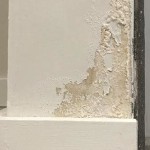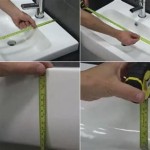How to Bathroom Vanity
A bathroom vanity is a vital piece of furniture that serves both functional and aesthetic roles in a bathroom. It houses the sink and provides storage for toiletries, towels, and other bathroom necessities. Choosing and installing a bathroom vanity can significantly impact the overall look and functionality of your bathroom. This article will guide you through the process of selecting, installing, and maintaining a bathroom vanity, providing a comprehensive understanding of this essential bathroom fixture.
Choosing the Right Bathroom Vanity
The first step in getting a bathroom vanity is to determine the specific needs and preferences for your bathroom. Several factors influence the choice of a bathroom vanity, including:
- Size: Measure the available space in your bathroom carefully to ensure that the chosen vanity fits comfortably. Consider the wall space, door clearance, and the distance between the vanity and other fixtures.
- Style: Bathroom vanities come in various styles, from traditional to modern. Choose a style that complements the overall aesthetic of your bathroom. Consider factors like cabinet finish, countertop material, and sink design.
- Functionality: Think about the storage requirements you have. Do you need ample drawer space, open shelves, or a combination of both? Consider the functionality of the vanity and how it will meet your specific needs.
- Budget: Bathroom vanities can range in price significantly. Set a budget beforehand and research different models within your price range. Remember that quality and durability often come at a higher price.
Once you have considered these factors, you can start browsing bathroom vanity options from different retailers. Online stores and local home improvement stores are excellent places to find a broad selection. Don't hesitate to consult with a bathroom specialist or interior designer for expert advice and recommendations.
Installing a Bathroom Vanity
Installing a bathroom vanity is a relatively straightforward project that most homeowners can handle with the right tools and instructions. However, if you're not comfortable with DIY projects, it's always best to consult a professional plumber or contractor. Here are the general steps involved in installing a bathroom vanity:
- Prepare the area: Clear the area around the intended location of the vanity. Turn off the water supply to the sink and disconnect the old vanity, if applicable.
- Install the plumbing: Connect the water supply lines to the new vanity's sink, ensuring the connections are secure and leak-free. Install the drainpipe and connect it to the existing drain line.
- Assemble the vanity: Follow the manufacturer's instructions to assemble the vanity, including attaching the countertop, sink, and any additional hardware. Ensure the vanity is level and stable before proceeding.
- Secure the vanity: Attach the vanity to the wall studs or use suitable anchors for drywall installation. Make sure the screws are long enough to provide secure support.
- Connect the sink fixtures: Install the faucet, soap dispenser, and other sink fixtures according to the manufacturer's guidelines.
- Test for leaks: Turn the water supply back on and test all connections for leaks. If you find any leaks, tighten the connections or contact a plumber for assistance.
It's crucial to follow the manufacturer's instructions carefully and take necessary safety precautions during the installation process. Always wear protective gear, such as gloves and goggles, and work in a well-ventilated area.
Maintaining Your Bathroom Vanity
To ensure your bathroom vanity lasts for years to come, proper maintenance is essential. Here are some simple tips for maintaining your vanity:
- Clean regularly: Wipe down the countertop and sink with a mild cleaner and water. Avoid harsh chemicals or abrasive cleaners that can damage the surface.
- Prevent water damage: Ensure that the bathroom is well-ventilated to prevent moisture build-up. Clean up spills immediately and avoid leaving water standing on the countertop or sink.
- Check for leaks: Regularly inspect the plumbing connections and the sink for any leaks. Address any leaks promptly to prevent damage to the vanity and surrounding areas.
- Keep the drawers and shelves organized: Regularly clean and tidy the storage compartments in your vanity. This will help prevent clutter and make it easier to find what you need.
Following these simple maintenance tips will help you keep your bathroom vanity looking its best and functioning properly for years to come. Remember to refer to the manufacturer's instructions and warranty information for specific details on caring for your particular vanity model.

How To Build A Diy Bathroom Vanity Angela Marie Made

How To Install A Bathroom Vanity

Vanities Furniture Style Vs Traditional Cabinet Toulmin Kitchen Bath Custom Cabinets Kitchens And Bathroom Design Remodeling In Tuscaloosa Birmingham Alabama

Tutorial How To Install A Bathroom Vanity The Diy Playbook

Diy Bathroom Vanity For 65 Angela Marie Made

A Step By Guide To Designing Your Bathroom Vanity

Best Bathroom Vanity Design Ideas Christopher Scott Cabinetry

Tutorial How To Install A Bathroom Vanity The Diy Playbook

6 Modern Bathroom Vanity Design Ideas Lily Ann Cabinets

A Step By Guide To Designing Your Bathroom Vanity
Related Posts







